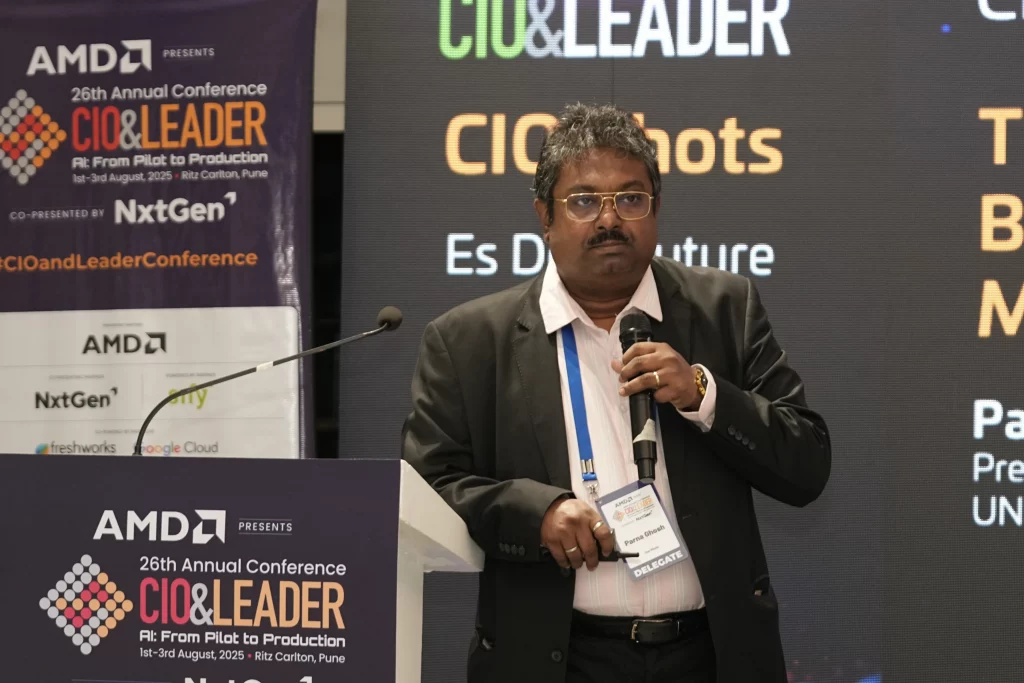AI is the accelerator of modern manufacturing. By uniting IT, OT, and AI, India can build intelligent, resilient, and sustainable factories of the future.

When I discuss artificial intelligence in manufacturing, I don’t begin with hype. I often remind people that we started with mainframes, COBOL, Pascal, and Fortran. But the real story today is the triad of IT, OT, and AI, a convergence that is quietly, but powerfully, reshaping Indian manufacturing.
IT–OT integration was already there. AI is the accelerator. It takes business to the next level, enabling sharper decisions, greater competitiveness, and more resilient operations.
The Triad of Transformation
For me, the interplay of Information Technology (IT), Operational Technology (OT), and Artificial Intelligence (AI) is as delicate and powerful as the mythical balance of Brahma, Vishnu, and Maheshwar.
- IT forms the backbone of cloud infrastructure, cybersecurity, ERP, CRM, HR systems, and analytics.
- OT connects the physical world, robotics, sensors, PLCs, and shopfloor automation.
- AI accelerates various applications, including predictive maintenance, real-time analytics, machine learning, and computer vision.
This triad is the true enabler of Industry 4.0, transforming factories from isolated silos into connected, intelligent ecosystems.
Smart Manufacturing in Action
The Indian automotive industry is no longer a bystander in this transformation. We are already deploying AI and IoT pilots across factories, from vision analytics for defect detection to edge computing delivering real-time shop floor insights.
Traceability, safety, and quality are non-negotiable. Failures on the road must be traced back to suppliers, while AI-powered analytics achieve near 100% defect detection. Edge devices empower workers with live data, enabling faster responses and better decisions.
India is also stepping into the league of “lighthouse factories” recognized by the World Economic Forum, plants where every stage, from sensor input to automated outcomes, is AI-enabled. I summarize this journey in four words: connect, collect, analyze, and realize.
The Shopfloor Challenges
But transformation is never without challenges. Integration is the toughest part. Unifying ERP, CRM, HR, and MES systems into a single seamless platform consumes the majority of the project effort.
Furthermore, external risks loom large. Supply chain shocks, such as China’s restriction on exports of rare-earth magnets essential for EV production, can disrupt India’s automotive output and threaten festive-season volumes.
Cybersecurity and the Skills Gap
I see two other pressing concerns:
- Cybersecurity: Although IT security may be robust, OT security often lags. A breach here is devastating; outsiders could lock down a factory or alter machine specifications. The risk is real, and the stakes are enormous.
- Skills: Finding talent in SAP, React, Java, and AI remains one of the industry’s most significant challenges. Building AI expertise and OT literacy internally, along with strong change management, is critical to success.
The Road Ahead: Intelligent, Green Factories
Looking forward, sustainability will be as important as efficiency. Just as we have green data centers, we will see green factories as a vital step toward India’s 2070 carbon neutrality target.
Generative AI will accelerate design, autonomous plants will redefine production, and flexible systems will ensure resilience in uncertain times. This is what smart truly means in the factory of the future.
Final Word
The IT–OT–AI triad encompasses more than just technology. It is about creating an intelligent, resilient, and sustainable backbone for Indian manufacturing. If we can unite these forces wisely, India will not just participate in Industry 4.0, it will lead it.